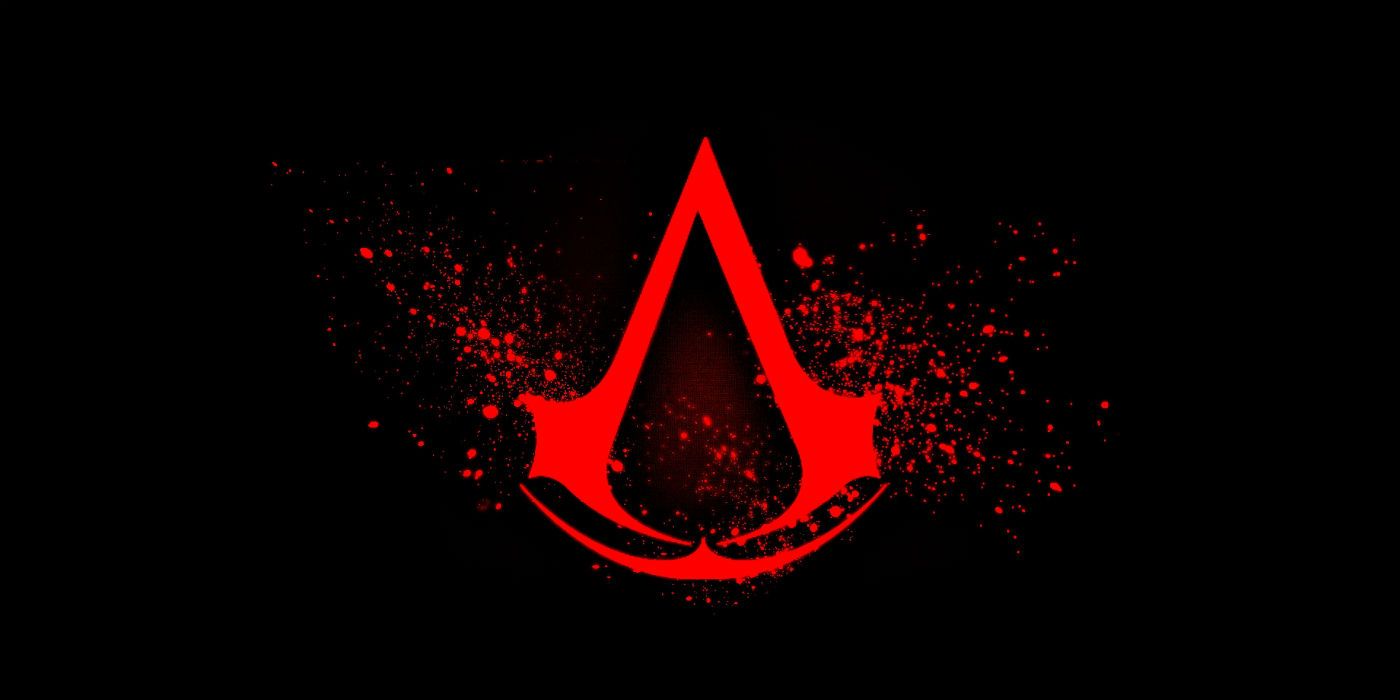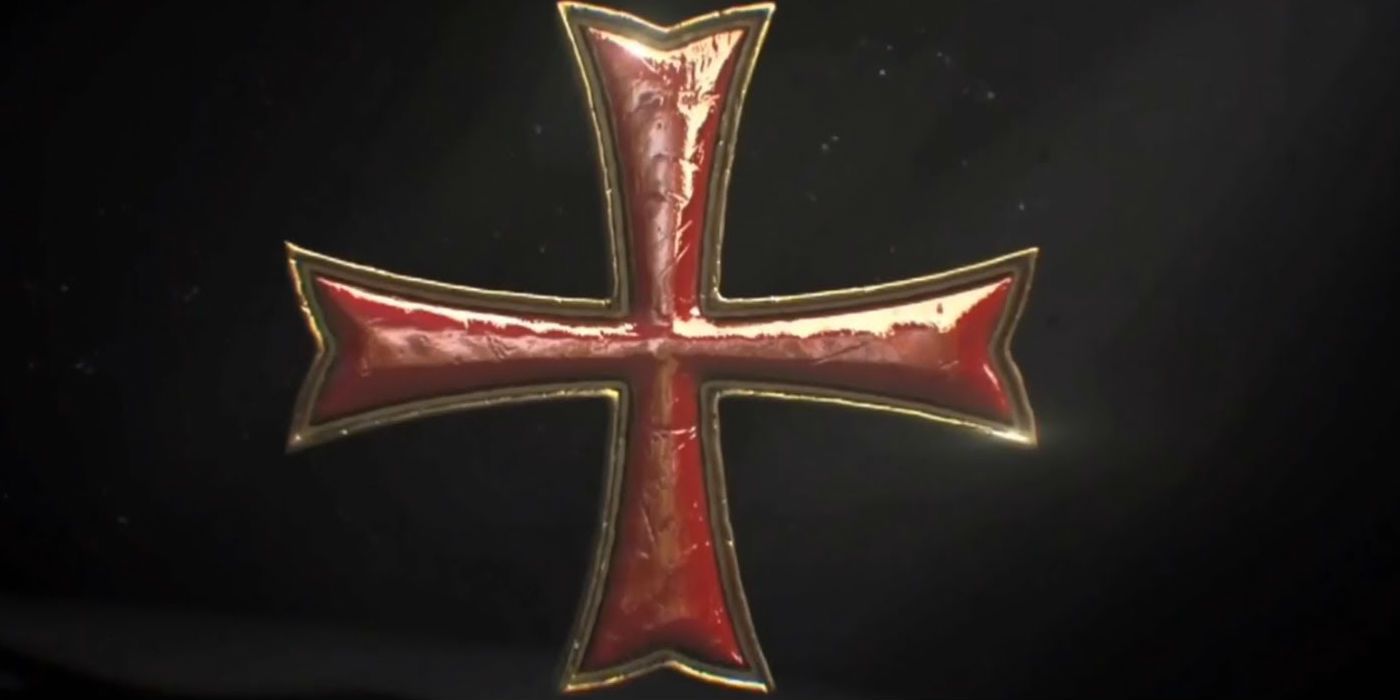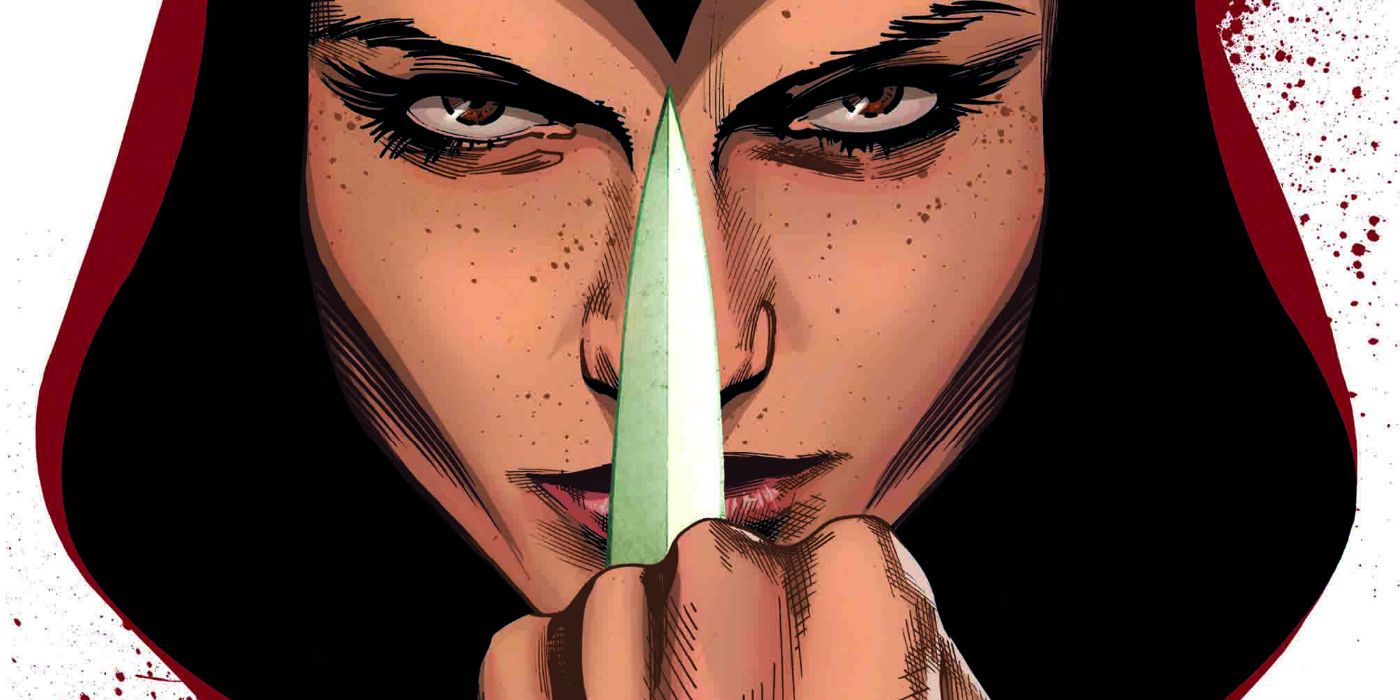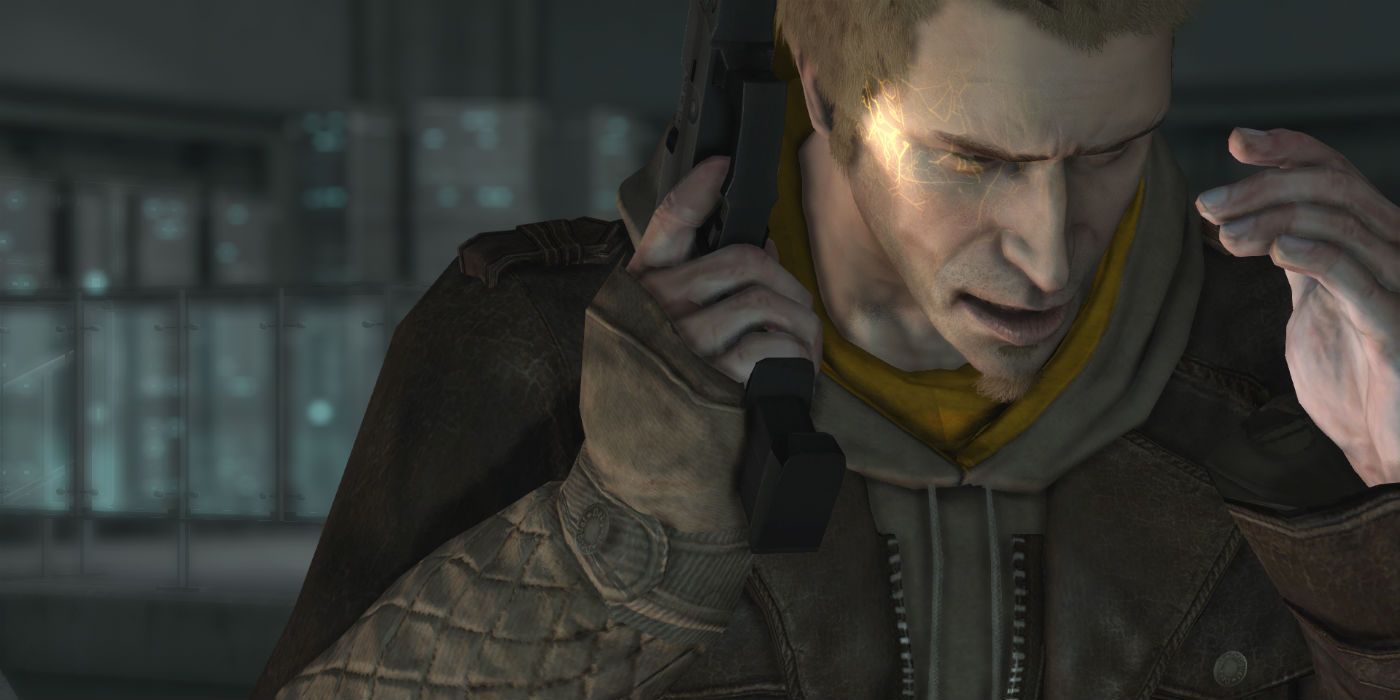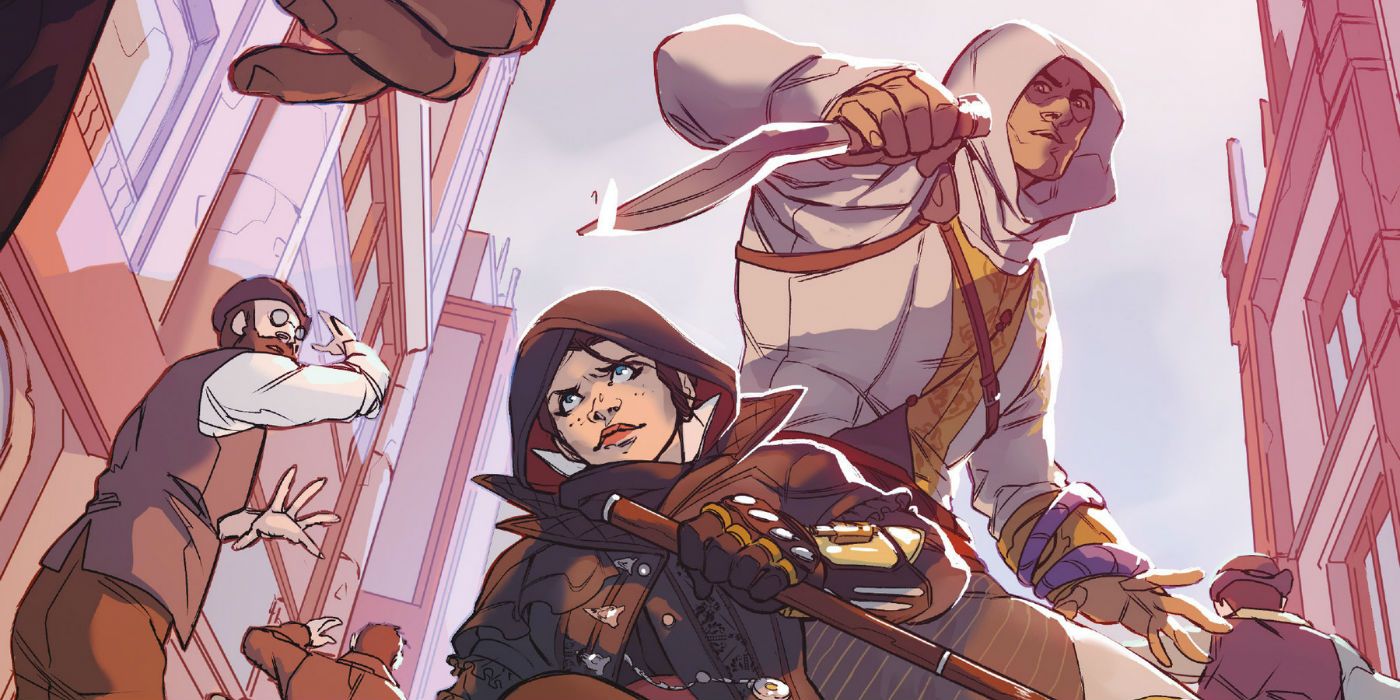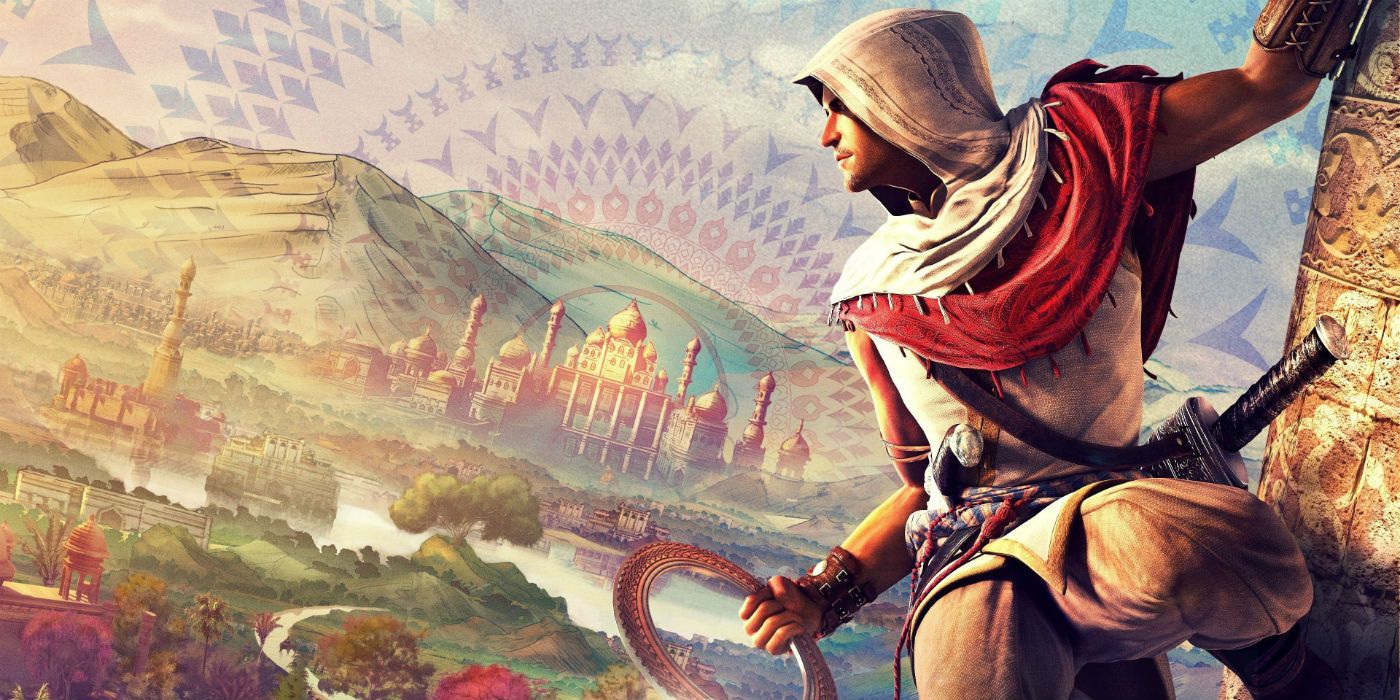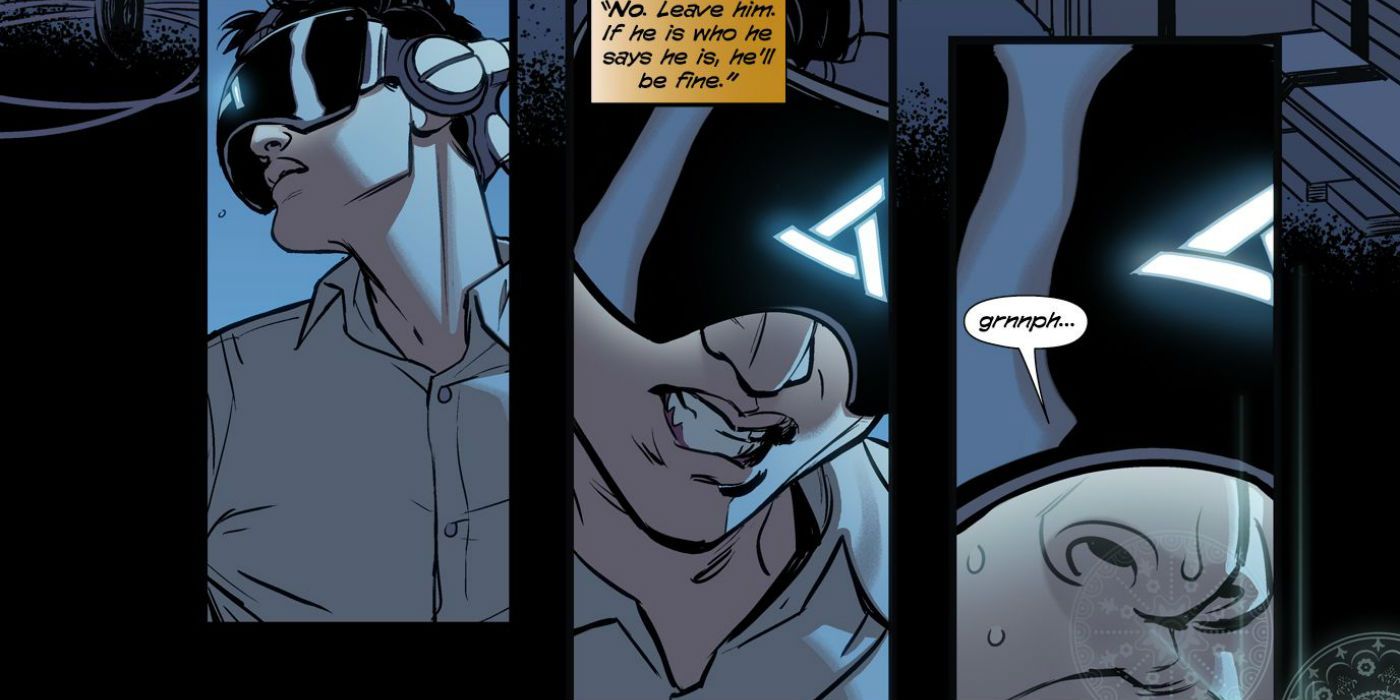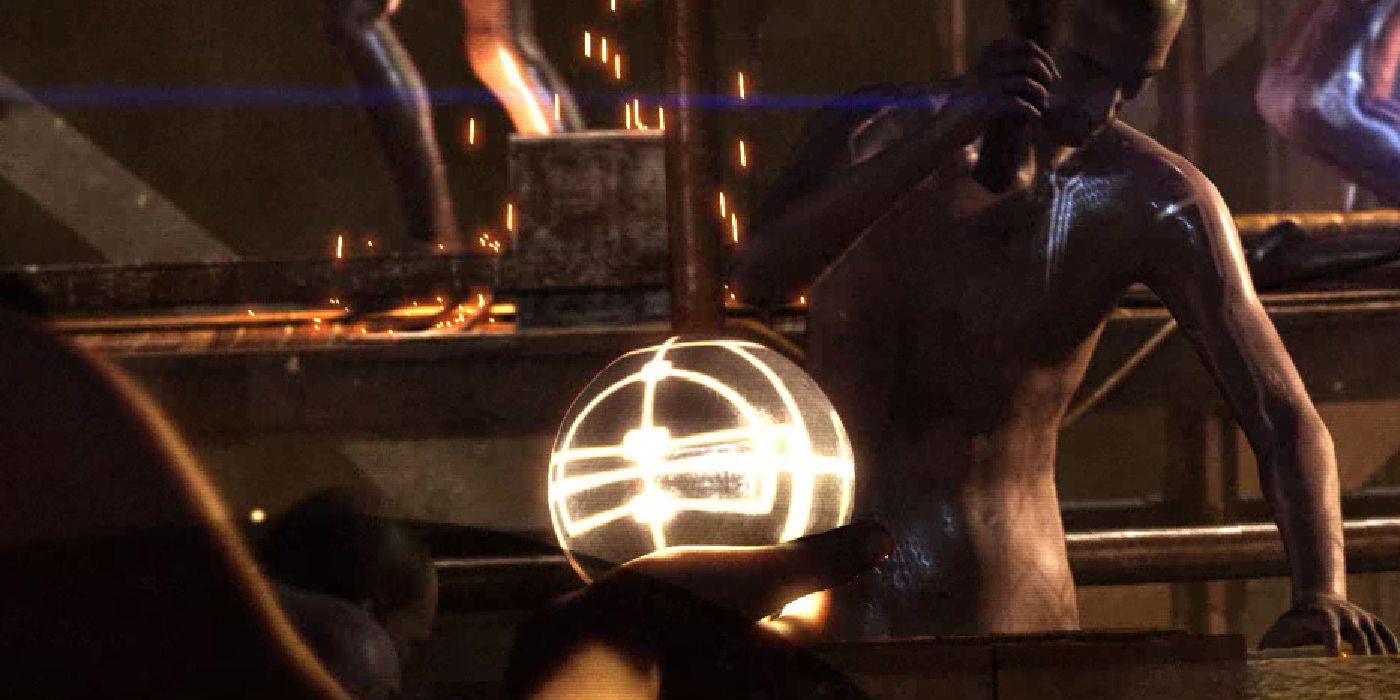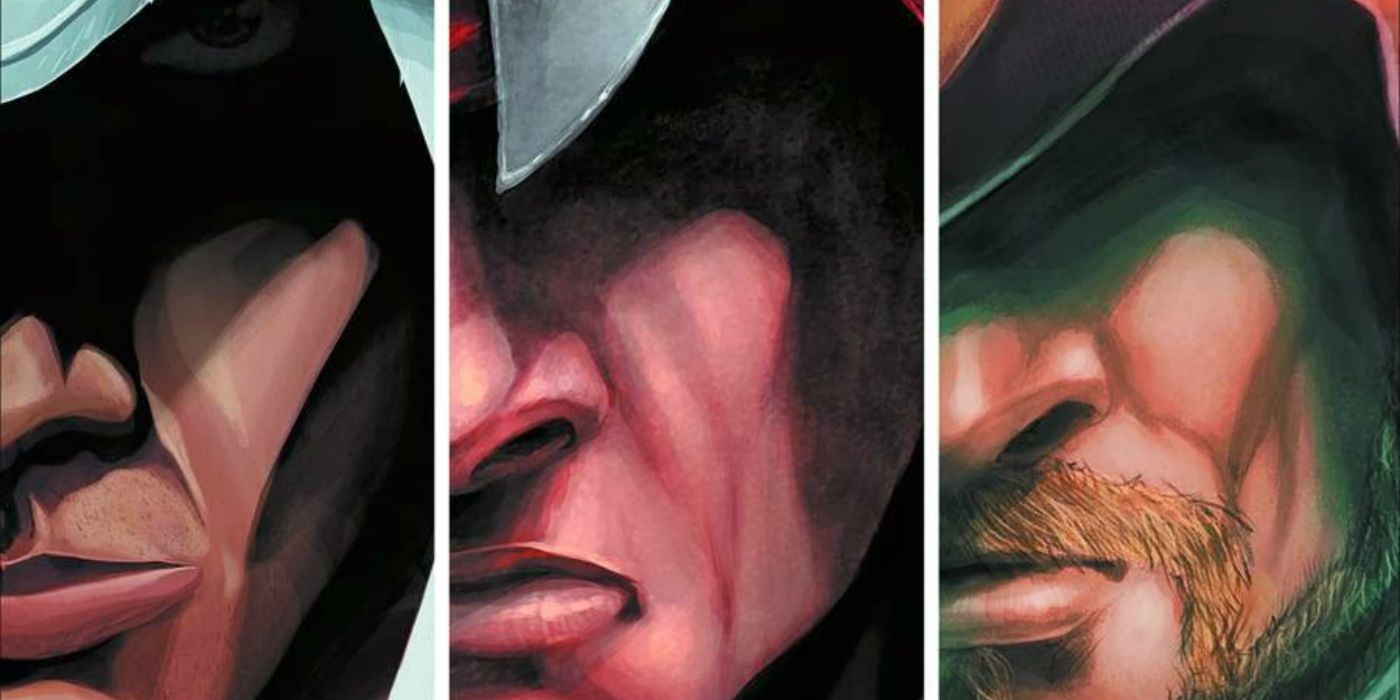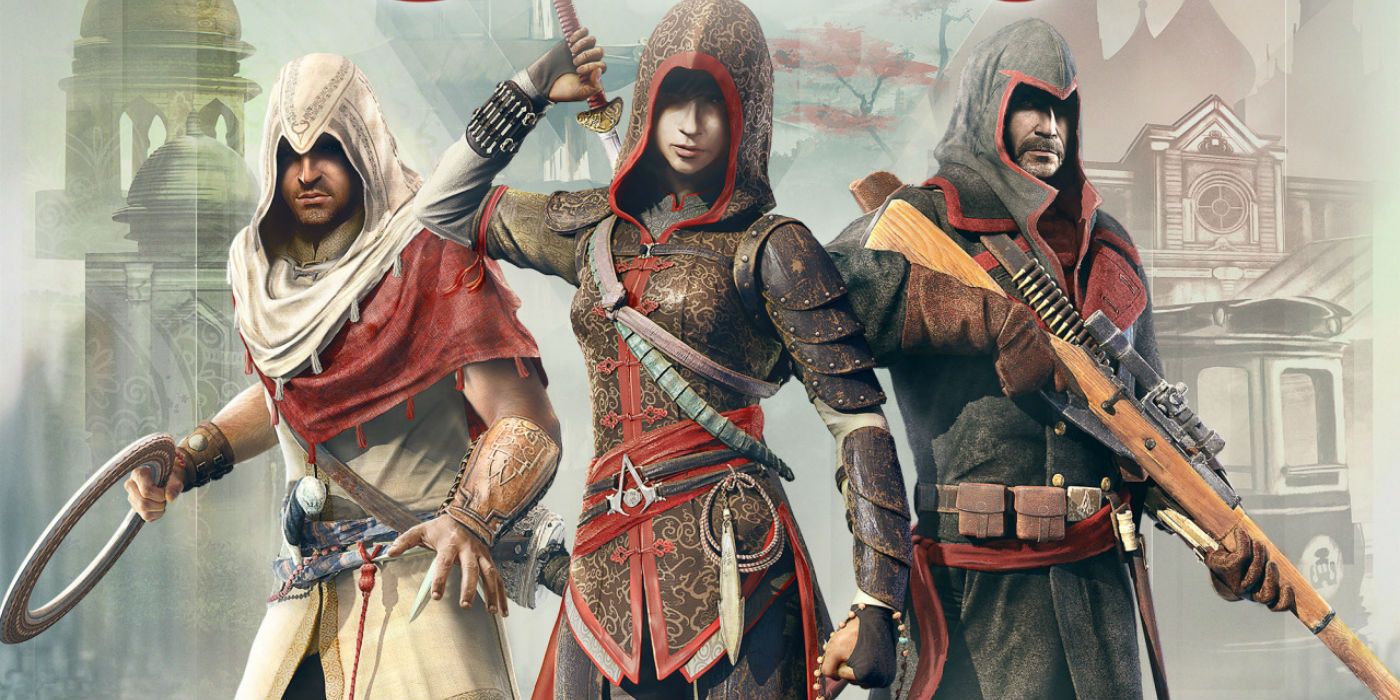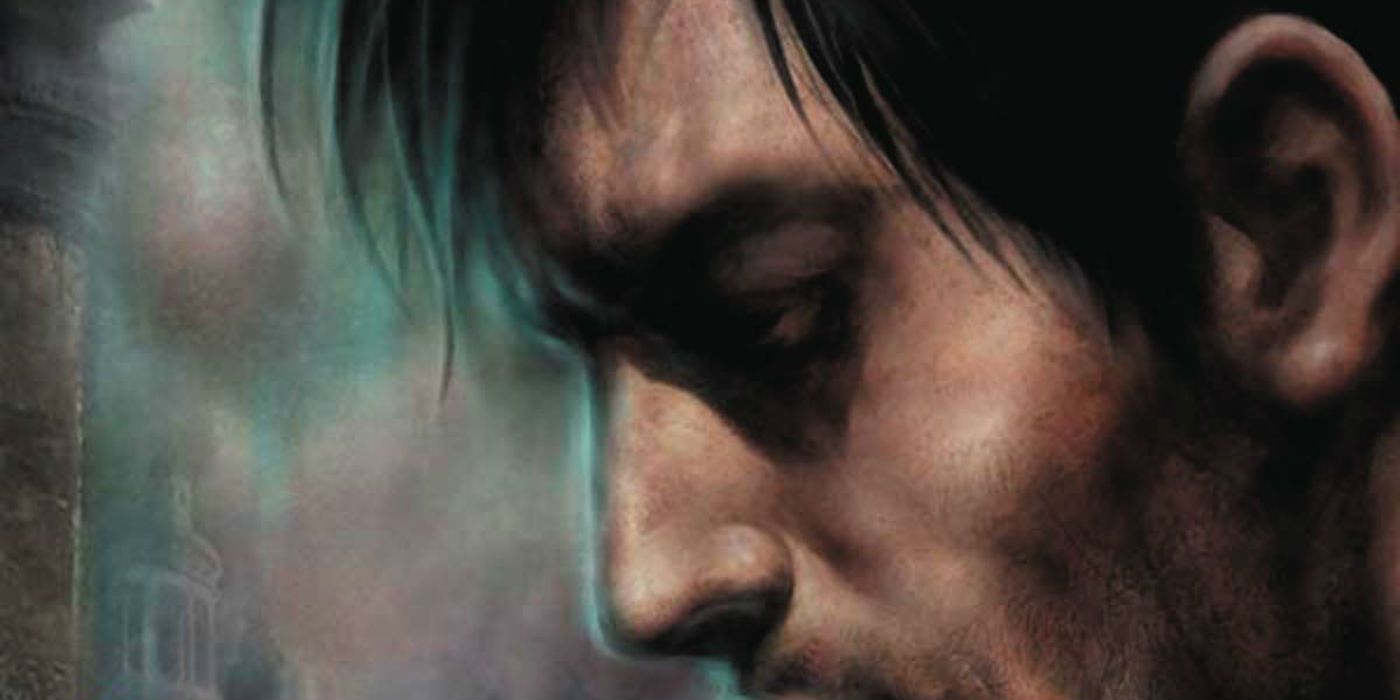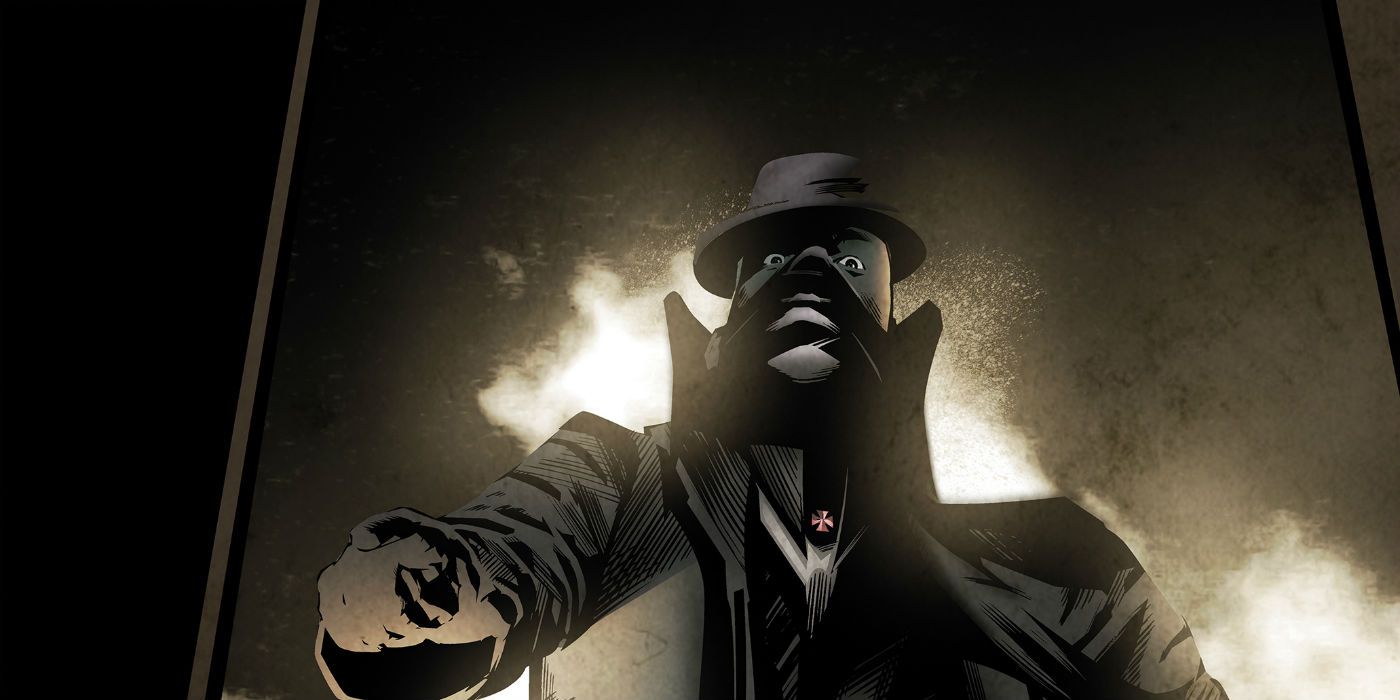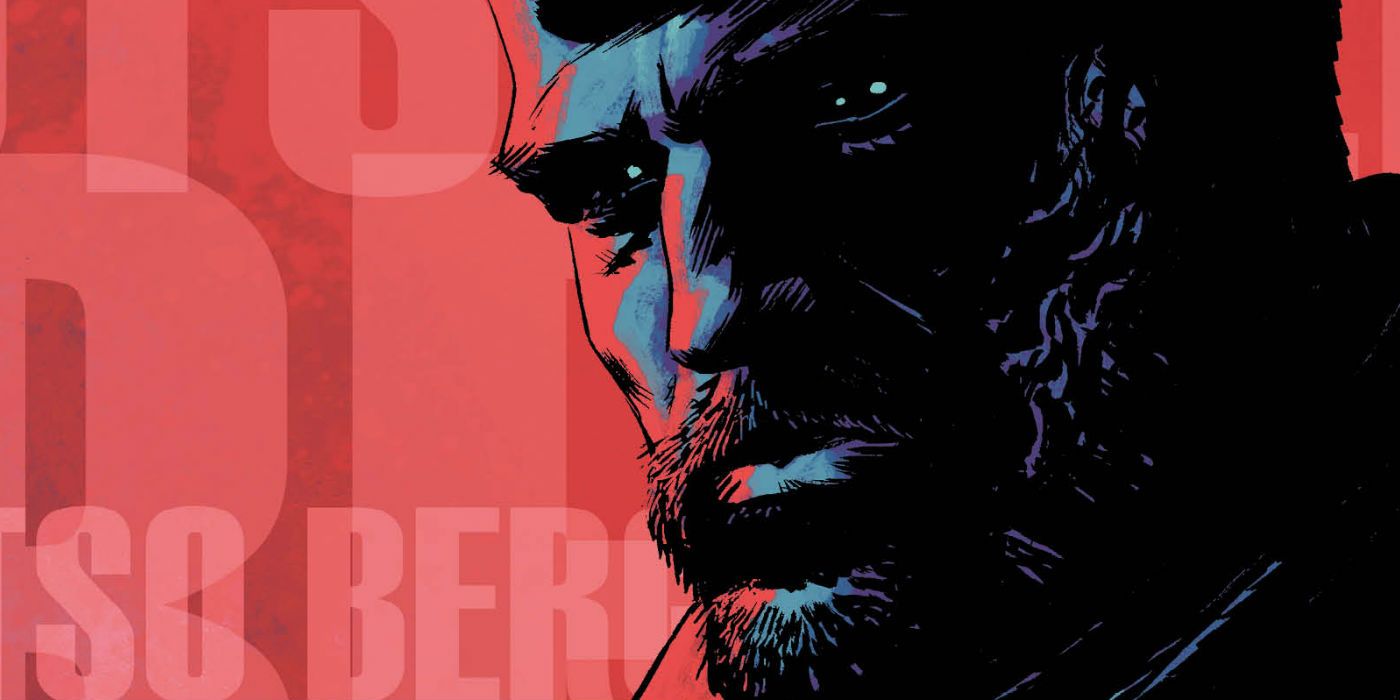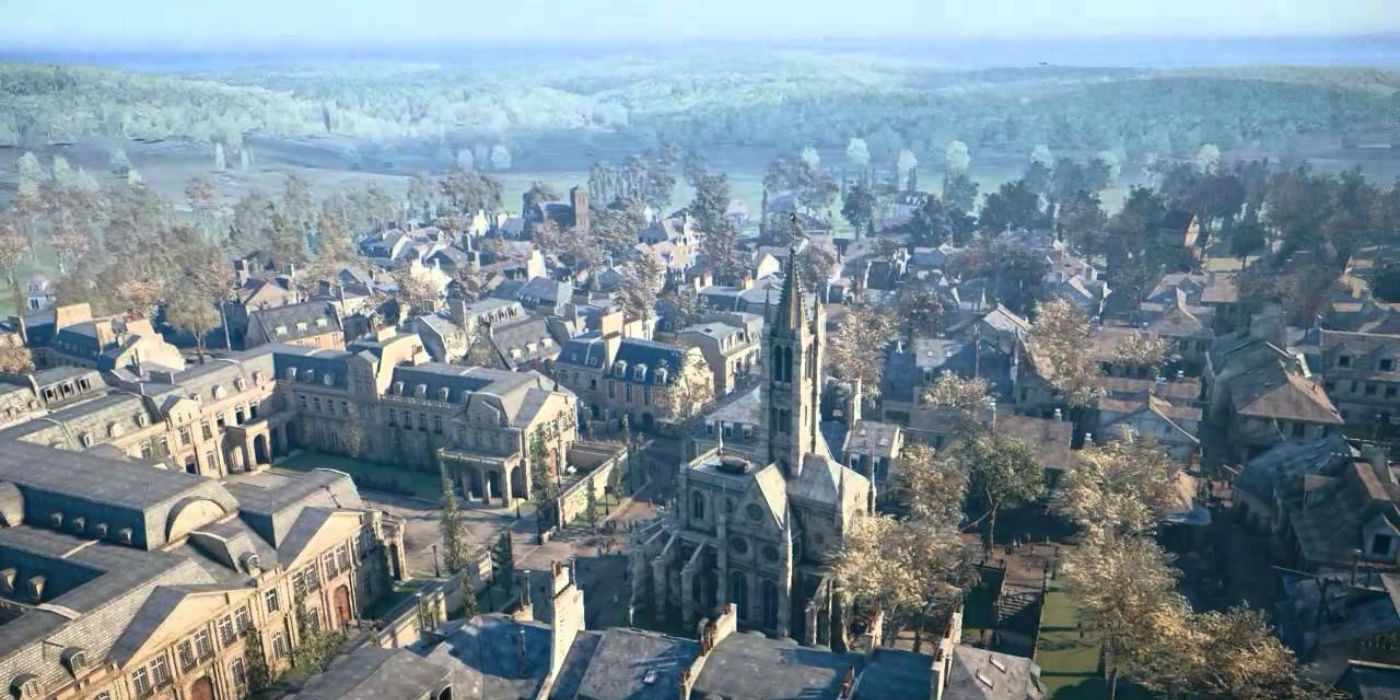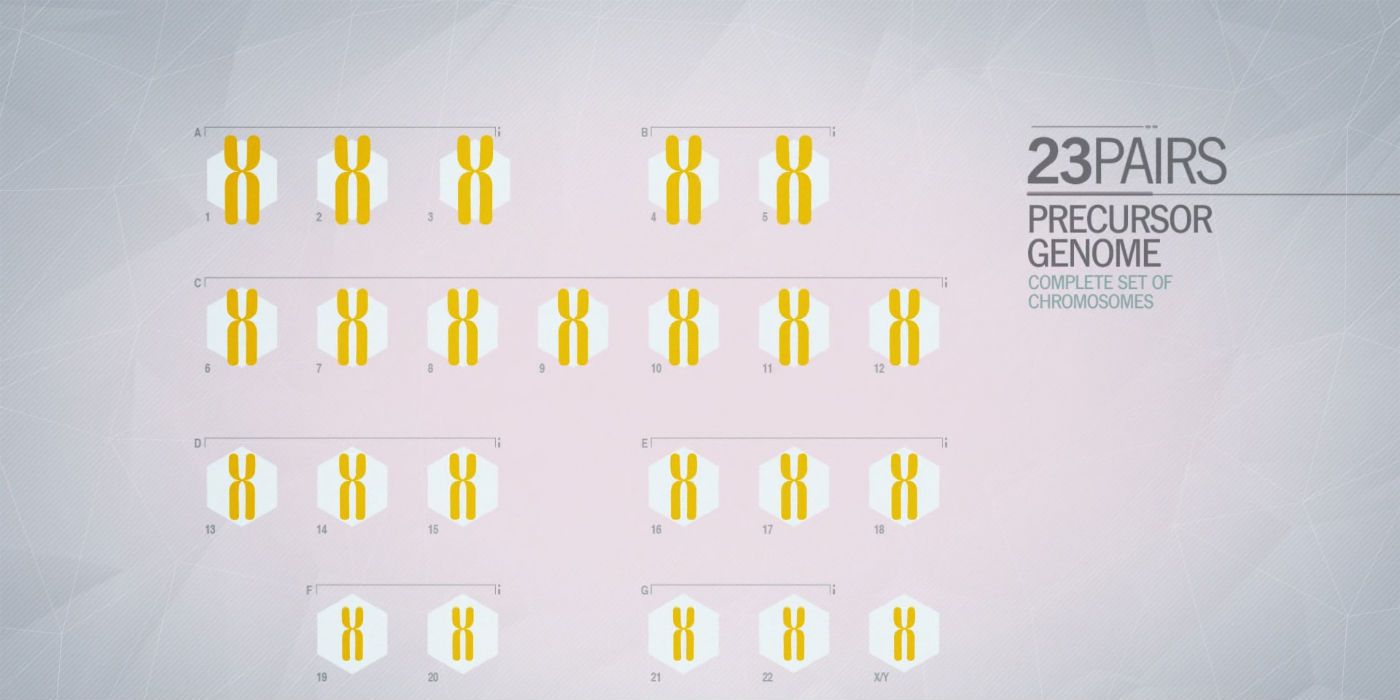Gamers have loved the "Assassin's Creed" universe ever since we were introduced to the Templars and the Assassins, both based on real historical organisations, back in 2007. Not only did it offer something largely unique in regards to gameplay and setting, but it also awed us by building its plot atop the concept of a First Civilization and the various devices they left behind, twisting and shaping human history forever.
RELATED: Marvel vs. Capcom Infinite: 15 New Marvel Characters We Want To Play
That's something they strive to show us through beautifully rendered locations, created with historical accuracy in mind...for the most part. But there's only so much they can show us through video games, which is part of the reason why there's now a film being released. Comic books allow for so much more flexibility and they've realized that. There's a lot in those pages and we here at CBR will be exploring the reasons why you should be reading them.
15 There's A Deeper Look Into The Templar Order
While the video games offered a glimpse at the Templars of antiquity, as well as their mysterious present-day front, Abstergo Industries, we never really get to see the organisation from the other side. That's where the comic books come in. Through "Assassin's Creed: The Chain," written and illustrated (along with its predecessor) by Cameron Stewart and Karl Kerschl, we're shown how they may operate. Through the eyes of one of their former sleeper agents, we see the vastness of their wealth, as well as the technological and organizational capabilities it allows them in the present day. This includes how they're able to train their agents, the number of Animi they possess, what kind of mental and physical care they can provide and so much more.
We do see a bit of that through in the video games (their facilities in "Assassin's Creed III" for example) but we never really get to see how it functions, which is something the comic books show us -- minus the panic and pressure of trying to break in out of a heavily guarded Templar building.
14 We Get Closer Looks At The Assassins
Though the video games have shown us a lot about the Order of Assassins, they remain as enigmatic to us as they appear to their rivals, the Templars. We have no real knowledge from the video games about how they function in the present day other than the fact that they tend to use guerrilla tactics. The three-issue "Assassin's Creed: The Fall" series shows us just how widespread they once were before the Templars struck. We even get to see the Mentor and his base of operations.
Titan Comics' "Assassin's Creed: Assassins," written by Anthony Del Col with artwork by Neil Edwards, expands even more on the mysterious ways of the Order of Assassins from the perspective of an initiate, Charlotte De La Cruz, who the Order decided suited their needs because of the memories locked inside her genes. Yes, there were a few similarities to Desmond's whole association with the Assassins but at the same time, it's very different.
13 We Get The Details On Daniel Cross
A lot of the expansion of the "Assassin's Creed" universe in comic books began with Daniel Cross, who was seemingly orphaned as a young boy and grew up to be a misguided and broken man, haunted by memories that don't belong to him, but rather to his great-grandfather, Nikolai Orelov, whom you might have seen in "Assassin's Creed Chronicles: Russia." "Assassin's Creed: The Fall" and its sequel, "Assassin's Creed: The Chain," published by Wildstorm and by UbiWorkshop, respectively, follow Daniel and, through him, Nikolai, through crucial turning points in both of their lives. If you've never read these comics before, you may have encountered Daniel in "Assassin's Creed III" and that appearance may have seemed a little random. It wasn't and there's a very good explanation as to why he was there if you read the comics.
You probably won't like the character in the beginning, you may not even like him in the end, but his story is one worth exploring and is a prime example of great storytelling in the "Assassin's Creed" universe that, while certainly being a tale worth telling, just wouldn't work in a video game.
12 They Fill In The Gaps
The "Assassin's Creed" universe is constantly growing with every instalment in the video game series. There are bound to be gaps in the story, little bits and pieces we want to see more of. That's where the comic books come in. As we've said, certain plot devices such as Daniel Cross, can seem a bit random to those who haven't come across anything "Assassin's Creed"-related outside of the video game series.
The comics even address the arguably less important plot points such as the Frye twins and the aftermath of "Assassin's Creed: Syndicate." We return to Victorian London in the mini-series "Assassin's Creed: The Last Descendants – Locus" written by Eisner-nominated Ian Edginton with artwork by Caspar Wijngaard, to discover just how Evie Frye and Henry Green (yes, they ended up together) continued to hold the British Assassin Brotherhood, helping to bridge the gap between the main plot of "Assassin's Creed: Syndicate" and the "Jack The Ripper" DLC storyline.
11 Arbaaz Mir
A running theme in the franchise is unity between different cultures and creeds. The whole reason why the Assassins fight is so that humanity may retain its freedom to love or hate and make its mistakes in doing so. It makes sense then that one of the Assassins they would introduce is Arbaaz Mir, who first appeared in "Assassin's Creed: Brahman." He was born to a muslim family that was slaughtered after the Sikh Empire conquered his home of Kashmir in North-western India.
The comic shows just how complex that concept of freedom really is and makes you question whether or not the Assassins are in the right. Arbaaz's story is one of romance, oppression, power, and freedom. It's also something you could never really see in a video game, at least, not in all its beauty. The closest you could get is "Assassin's Creed Chronicles: India" which features Arbaaz, but its plot cannot compare to the comic, written by Karl Kerschl, who also helped complete the artwork, and Cameron Stewart.
10 It Explores The Concept Of A Home Animus Console
The Animus, which began as a simple concept that explained the more video game-like controls and mechanics (HUD, dying and reloading, etc...) seen in "Assassin's Creed," eventually grew into something larger. The game's more recent instalments, following the events of "Assassin's Creed III," seem to have taken a different turn with the introduction of the Helix program, a cloud-based software introduced to consumers by Abstergo Entertainment. Those of you who have played the video games will know that it's just a way for the Templar-owned Abstergo Industries to monitor the genetic memories of millions and thus make their search for Pieces of Eden that much easier.
"Assassin's Creed: Brahman" explores that concept and digs just a little deeper into that concept and the effects it would have on the daily lives and relationships of everyday people. It's not an integral part of the plot to be sure, but it's an interesting thing to see if you love exploring hypotheticals.
9 Explores Other Pieces Of Eden
After so long and after so many games, everyone was growing weary of the Apple of Eden, which is probably why developer Ubisoft began showcasing the other Pieces of Eden through its video games, such as the Sword of Eden and The Shroud from "Assassin's Creed: Unity" and "Assassin's Creed: Syndicate," respectively.
The comics explore so much more. "Assassin's Creed: The Fall" for example, expands on the Staves of Eden, one of which appeared in "Assassin's Creed II." "Assassin's Creed: The Ankh of Isis" trilogy explores the titular Ankh which allows its users to heal the sick and even resurrect the dead, if only temporarily. "Assassin's Creed: Brahman" introduces the Koh-i-Noor, which was arguably the most powerful artefact of them all and yet was only briefly mentioned in "Syndicate." If you're more interested in seeing the other Pieces of Eden and their effects on the world, it's definitely worth picking up a graphic novel or an issue or two from any one of the "Assassin's Creed" comics.
8 Even Non-Canon Material Offers Plot Potential
The graphic novel trilogy, "Assassin's Creed: The Ankh of Isis," written by Eric Corbeyran, illustrated by Djilalli Defali and published by Les Deux Royaumes (a French subsidiary of Ubisoft), was evidently written with a lot of creative freedom given to the writers, which is why Desmond's time with Abstergo in the trilogy differed greatly from his actual experience in the games. Ubisoft however, while currently declaring all the modern-day aspects of the trilogy non-canon, accepted the storylines taking place in the past as being in continuity. That includes Aquilus and Accipiter's storylines as well as the events surrounding the Ankh, a powerful Piece of Eden.
Even if the modern day plot isn't canon, it made sense in places and showed us what some characters were capable of, namely Desmond, who took on a bunch of hired mercenaries and explored a bit of his past. With the character meeting his fate at the end of "Assassin's Creed III," it's unlikely that we'll ever see him involved in that much action. However, his past is something worth exploring with his father, who still lives and still leads a branch of the Assassins.
7 Adds To Character Depth
The video games, having two sections to most of them; both historical and modern day sections, don't allow for a lot of character development aside from the growth that you might see in the main characters. Desmond Miles and Lucy Stillman had a chance to grow before they met their end and we were satisfied that we'd been allowed to see enough of them as people. Others, such as Henry Green from "Assassin's Creed: Syndicate" are a little more well developed but never as much as we would like. "Assassin's Creed: Last Descendants – Locus" shows us a little more of him and the skills he developed after helping to take down Crawford Starrick.
Though the release of the "Assassin's Creed: Chronicles" series was mostly built on characters that had already been established through the comics, there are many who first encountered characters like Nikolai Orelov or Arbaaz Mir through these games and took a liking to those characters. If you're one of those people, you would greatly enjoy "Assassin's Creed: The Fall" and "Assassin's Creed: Brahman," as well as discovering just how complex these characters really are.
6 Artwork Worthy Of The Tales They Tell
Ubisoft has taken great care with its properties. You can tell by how adamantly they fought to maintain creative rights over the upcoming "Assassin's Creed" film, something no other video game developer has ever really had when it came to film adaptations of beloved video game franchises. They want to make sure that their world has been expressed in the perfect way. What better way is there than through the artistic expression provided by comic books?
It's difficult to portray the blood and tragedy that being an Assassin goes hand in hand with, let alone in a way that doesn't also diminish the significant historical settings these characters are often placed in. Thankfully, the artists, Cameron Stewart, Karl Kerschl, Djilalli Defali, did a fantastic job on their respective comics before Ubisoft began publishing with Titan Comics in 2015, after which, the renowned Dennis Calero began illustrating "Assassin's Creed: Templars" while the talented Neil Edwards illustrated "Assassin's Creed: Assassins." With all the power that pours through the vibrant or dark panels, their stunning artwork is reason enough to pick up a copy of the "Assassin's Creed" comics.
5 They Introduce Templar Heroes
In more recent instalments, the "Assassin's Creed" series has done its best to showcase both the best and worst of both side of the war and thus both sides of the argument. The Assassins aren't all good guys and the Templars aren't all bad guys. The first game to highlight this was "Assassin's Creed III," where we could hear both sides debating through Connor and his father, Haytham. "Assassin's Creed: Rogue" showed us that the Assassins weren't perfect and were perfectly capable of being destructive in their pursuits as well.
The comics give us a better look at the heroes of the Templar Order and it doesn't paint them as a villain in the larger picture. Just one example, "Assassin's Creed: Templars" #5, written by Fred Van Lente, shows us that chaos is slowly growing within the Templar and that an intervention from the feared Black Cross (who for centuries ensured that the Grand Master of the Templar Order remained true to the Templar code) may be needed to force order back into the Templar organisation and fight corruption.
4 Expands On Otso Berg
First introduced to us in "Assassin's Creed: Rogue" (though he made minor appearances before), Otso Berg is a mysterious agent of Abstergo Industries and currently a member of the Inner Sanctum of the Templar Order. That's no surprise with his background: a former Finnish Special Forces turned mercenary, acquired by Abstergo in exchange for treatment for his daughter's cystic fibrosis. He's often shown as being a cold, unfeeling fighter of great skill, but there's more to him.
"Assassin's Creed: Templars" #5 shows us that he cares about the Templar Order, he's a loyal agent and a caring father, confident in what he does and how he does it, regardless of whether or not he upsets his superiors. We'll definitely see more of him in upcoming issues until they release "Assassin's Creed: Uprising" after the ninth issue of the ongoing "Assassin's Creed: Templars." It's a fantastic title to get into now until you wait for the next "Assassin's Creed" instalment.
3 They Expand On Erudito
Introduced quite subtly in "Assassin's Creed: Brotherhood" back in 2010, the hackers collectively known as Erudito made themselves known through various E-mails to Desmond Miles as well as to the faceless and nameless character you play in the multiplayer aspect of the games. Not much is known about Erudito and at one point it was speculated that the Assassin, Shaun Hastings, was the face, or at least one face, behind the virtual mask. Whoever they are, their goals as Erudito are clear: tear down the walls that hide the Templar Order.
While the video games have included less and less of Erudito which was presumably due to the mass arrests of its members back in 2012 (which you can read about if you go snooping through Abstergo's files in "Assassin's Creed: Black Flag"), they resurface in Titan Comics' ongoing "Assassin's Creed: Assassins" in the second volume, "Setting Sun." Charlotte De La Cruz, a newly recruited Assassin, is able to track down Erudito for the Assassins. It's a satisfying discovery for longtime "Assassin's Creed" fans and easily makes this comic series even more exciting.
2 No Game Glitches To Disrupt The Scenery
The games cover a lot of historical settings, from the Crusader-era Holy Land and Renaissance Italy to the golden age of piracy and Victorian London. They tend to be historically accurate (with a few added anomalies for gameplay) and beautifully rendered which gives players truly immersive experiences in new and exciting time periods. Fans often passionately voice their desire to be taken somewhere new and to be able to explore the world's historical time periods. The French Revolution was a big demand and their prayers were finally answered when "Assassin's Creed: Unity" was released, though that wasn't without its disappointing programming flaws.
That's why the comics are sometimes so much better. You will never see immersion-disrupting glitches in the pages of a comic book, and the "Assassin's Creed" comics do just as fantastic a job of whisking readers away to historical periods, be they the Classic Roman landscapes of "Assassin's Creed: Aquilus" or the Incan cities hidden in the clouds in "Assassin's Creed: Assassins." If you can't wait for a new game to see exciting historical moments and backdrops, then look no further than the comics.
1 Conclusion Of The Phoenix Project
In 2012, an image was leaked containing what looked to be a darkened underground facility of some sort with Erudito's logo on a screen and the words "Assassin's Creed: Rising Phoenix" splashed across the entire image in white and red. It lit a fire amongst fans of the franchise and no time was wasted guessing what it meant. Fast forward a couple of years and we now know through "Assassin's Creed IV: Black Flag" and "Assassin's Creed: Syndicate" that the Phoenix Project is an attempt by Abstergo to sequence the triple-helix genome of a member of the First Civilization.
The "Assassin's Creed: Assassins" storyline as well as that of the "Assassin's Creed: Templar" series will conclude soon. Titan Comics plans to turn to a new creative team to write "Assassin's Creed: Uprising" which will reportedly end the Phoenix Project storyline. While the video games still have a plot going on involving Juno, a virtually preserved First Civ scientist, if you're more interested in the Assassin vs Templar struggle, then the Phoenix Project is something you'll definitely want to see properly concluded in the upcoming series, set to be released in February 2017.
Any other reasons we should be reading the comics? Let us know in the comments!

